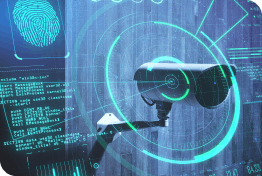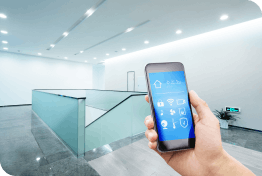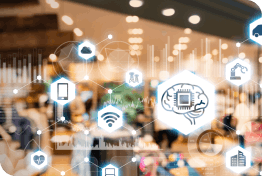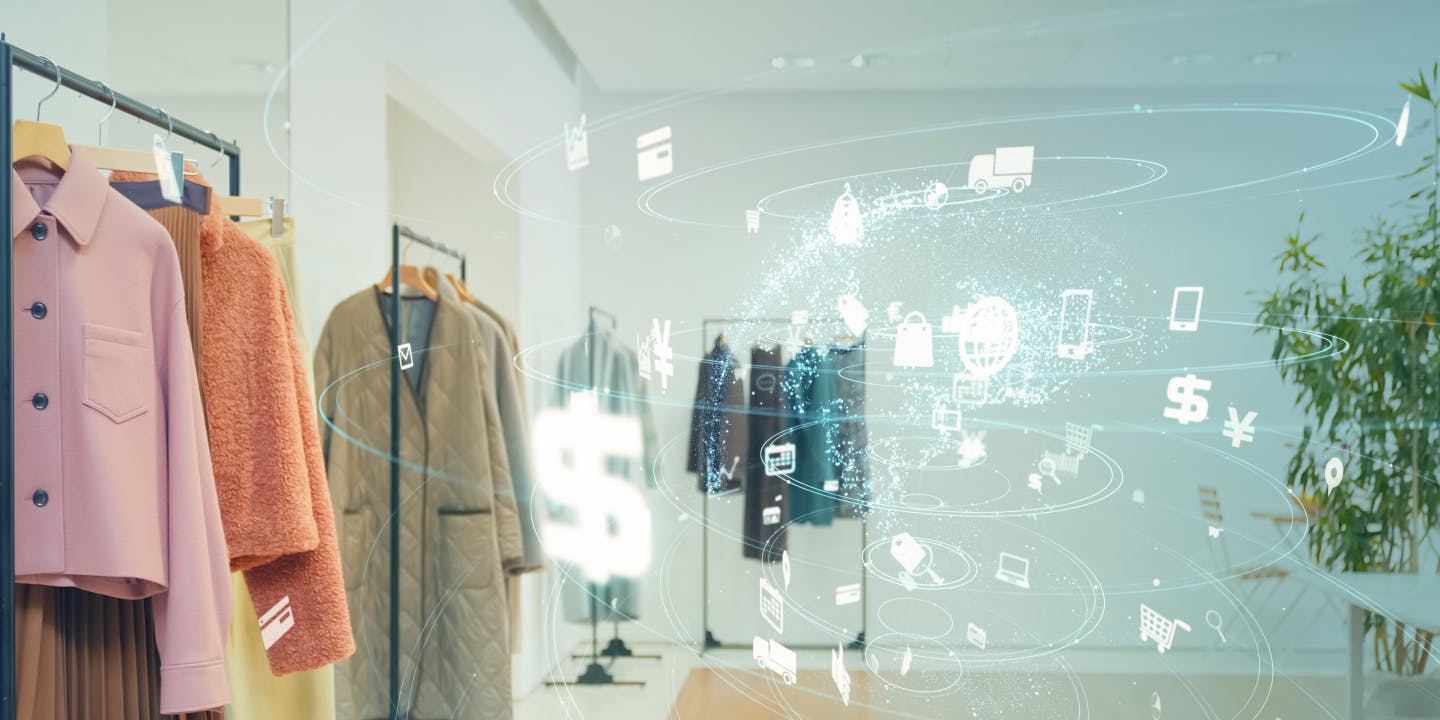
- Physical security
How to embrace the digital transformation of physical security in retail?
Retail is a tricky business right now. Due to the growing consumer demand for convenience, online shopping has led to significant disruptions for brick-and-mortar retailers and is putting pressure on everyone's profitability. More and more retailers are moving to frictionless shopping, dismantling anything that slows down the checkout process to combat this. New payment and retail technologies, such as mobile wallets and apps, pose new challenges for loss prevention and a safe in-store customer experience.
But luckily, digitalization has made its way into the retail sector: Digital transformation in retail has increased speed, efficiency, and accuracy in all retail areas. Enabled by the cloud that provides the necessary infrastructure, powerful new physical security technologies and systems like AI and machine learning are emerging. And they aren't only changing how retailers secure their stores today: Their benefits extend beyond improved security to operational insights that drive retail efficiency and profitability. Using the new advancements created by AI in smart video surveillance, sophisticated access control, and intrusion detection to future-proof their physical security should be a priority for any retail owner. How? Keep reading.
Physical security challenges in retail
Shoplifting
New "just walk out" shopping and checkout solutions increase one of the biggest challenges when running a retail business: The loss of profits due to fraud and shoplifting. Whether it's customers stealing products or joining forces with sales personnel: Inventory thefts can quickly deplete available stock and profits.
For security systems to perform tasks and solve problems the way we would, they must be equipped with human-like intelligence. But how can human intelligence be imitated? AI developers use mathematical functions and complex algorithms to replicate human intelligence in security technology. What many don't know, however, is that AI is also heavily influenced by psychology, neuroscience, philosophy, and communications. Computer science can be seen as a mere enabler, a means to an end to implementing AI.

Using physical security precautions to protect products from external threats is insufficient: Employee burglary and fraud can be just as damaging as conventional shoplifting. In most cases, employees walk away with goods during working hours. Since staff often have access to the store around the clock, they might also return after hours to steal products. Another common scam tactic is to fake scanning items at the checkout to benefit certain customers ("sweethearting") or the giveaway of free or discounted items to acquaintances. That's why store owners must ensure their security measures cover the internal angle.
Sales going multi-channel is intensifying the risk of product shrinkage caused by theft. Fuelled by the pandemic, many stores now offer services such as in-store pick-ups or deliveries. However, they can only keep track of in-store shoppers, pick-up customers, and packers of e-commerce orders at a time.
Accidents
Slips, trips, and falls are bad news for retailers and shopping mall operators – it's bad publicity and can cause high insurance costs. No matter the preventive measures in place, accidents can always happen: Food and beverage spills, recently waxed or mopped floors, uneven surfaces, poor or uneven lighting – the list is endless. Retailers and shopping center security operators are responsible to employees, customers, and the public. If someone hurts themselves in a store due to the recklessness of the business, the retail owner will be held responsible.
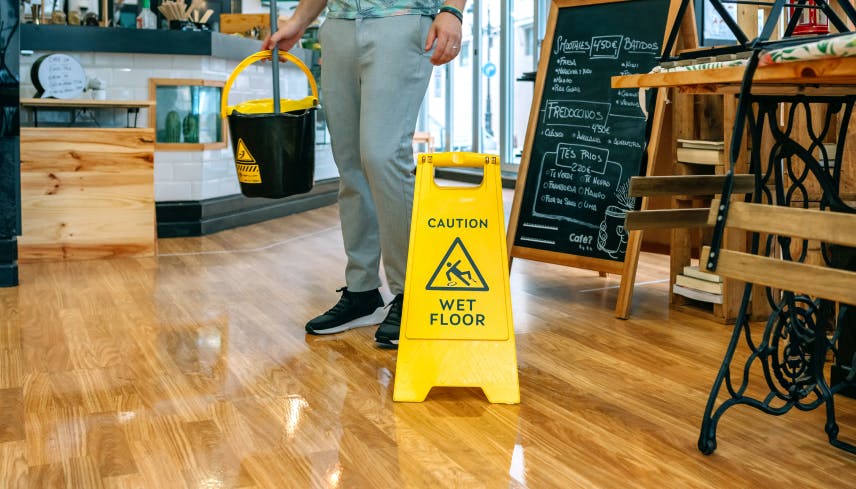
Manual maintenance of security devices
Retail organizations require many physical security devices and sensors to mitigate threats and vulnerabilities in the physical environment. These are often distributed across multiple locations and buildings and sourced from manufacturers. Due to regular firmware version updates, password changes, and other misconfigurations that can occur over time, security devices must be constantly monitored and controlled. Since this can often only be done manually, the amount of manual work is often overwhelming.
Increasing data volumes
With all their sensors, physical security devices like alarm systems, smoke and fire detectors, door locks, and cameras produce a massive amount of data volume which cannot be processed at a human level. Without the right systems to correlate and analyze the data, essential insights might go unnoticed. In addition, if data is not centralized in a single location, false alarms will continue to occur.
How is AI elevating physical security to a new level?
The industry's massive labor shortage is a major reason for AI's rise. While the number of security guards is steadily decreasing, the number of sensors is growing exponentially. Monitoring is becoming the largest sector within the physical security industry, but CCTV will remain a forensic tool only if no one looks at the video footage. For this reason, AI is desperately needed in the industry. Large-scale analysis of video and events will be the most relevant use case for AI in physical security.
Retail Video Analytics
Smart video surveillance by high-quality smart cameras has become imperative for physical monitoring and recording in-store operations. To help retailers make better-informed decisions and identify operational gaps, cameras must be able to correlate and leverage data from various security appliances. That way, AI real-time video analytics deliver more value to retail businesses than ensuring the physical security of all retail stakeholders. Initially developed for securing stores, the intelligence in smart cameras now uncovers meaningful business insights and hidden opportunities for retailers to improve all aspects of store operations.
Smart cameras can detect obstacles, spilled liquids, and other hazards that might cause slip-and-fall incidents before they happen. If an accident did occur, the advanced video analytics and search features could validate trip and slip claims which might significantly reduce insurance claims.
Smart video analytics can detect when cashiers or customers are scanning products at self-service checkouts, hiding barcodes, stacking products, and using other fraud techniques. That way, they significantly reduce the chances of financial loss caused by theft and sweethearting while at the same time enhancing the working environment for your employees: Knowing that video surveillance has their back, they don't have to worry about common crimes like shoplifting or vandalism while serving customers. This improves in-store productivity – an essential KPI that retailers must measure. Protecting products through video surveillance also means having more time to focus on improving your multi-channel sales strategy.
Retail Access Control
Most stores have one or more entrances and exits. While some are for customers, others are for employees and suppliers only. To ensure the safety of your store and all stakeholders, only authorized people must have access to the areas designated for them. Thanks to tremendous advances in physical security technology, adding multiple layers of authentication is now possible. Comprehensive access control systems that include advanced locks, biometric authentication and authorization, smart access control cards, or cell phones are the way to go. Cloud-based access control systems will provide real-time reports that tell you who is still in the building in the event of an emergency requiring evacuation. Also, they can be integrated with a calendar so that certain doors remain locked when needed.
Integrated Physical Security Systems
Achieving business intelligence in retail requires the right retail security system, a centralized smart security management system, and a technology-based process for collecting, storing, and managing data. When physical security devices are networked in a centralized hub, the individual security devices can share and combine data. Often, such integrated security solutions are cloud-based, meaning retailers can remotely control all multi-layered security systems, such as alarms and door locks, from a single device.
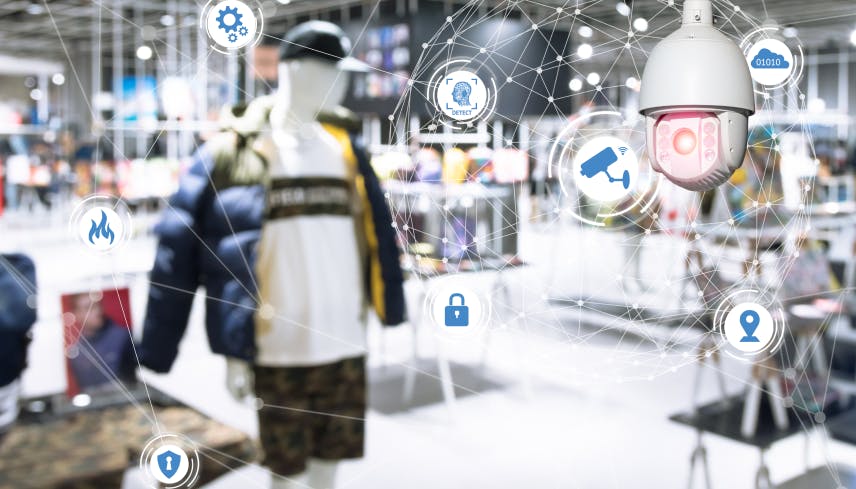
The centralized system that integrated security solutions offer makes it easier for retailers to collect data – integrating video surveillance, access control, and intrusion detection helps secure confidential areas such as warehouses, loading bays, and storage rooms. Any attempt of unauthorized access triggers an alarm and camera recording simultaneously. The video is streamed live on the access control system, allowing security teams to respond quickly. That way, networked physical security enables retailers to gain greater control, improve situation awareness, and better identify the vulnerabilities in-store. They will enhance security measures and be updated with the latest information on their enterprise security in real-time.
Providing a unified and centralized alarm management platform, your retail security operations and data are consolidated into a single solution without sacrificing efficiency. If you want to network many physical security systems such as video surveillance cameras, access control, and intrusion detection systems, integrated and flexibly extendable security solutions like the evalink are the right choice.

